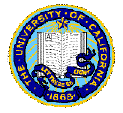
 |
Every year three to four thousand students enroll in statistics courses at U.C. Berkeley. About half of these students are taking Stat 2 in order to satisfy the University's quantitative reasoning requirement, and this may be their closest brush with the world of numbers, computing, and scientific quantitative concepts. The statistical training in these courses offers these students a rare opportunity to learn how to think critically about quantitative problems that are and will be important to them.
Paragraph follows
The labs are designed as stand alone units to be used in conjunction with any introductory statistics course. It does not depend on a specific text, and it is to be used outside of the class to reinforce the basic statistical concepts. It is also meant to be a fun learning experience. In the labs, students work on multifaceted assignments and come up with individual solutions. Each lab is quite a substantial exercise, and more complete than traditional questions that conclude a chapter of a text. Accordingly, they are not calculator-like environments with which a student can perform a statistical procedure. Rather than being an interactive component of a text book, these labs extend the syllabus by putting the techniques learned in class in a more interactive and applied setting.
The labs extend the statistics syllabus by capitalizing on the pedagogical advantages of a computer:
We believe this approach has great potential for fostering students' interest in the material they are learning. Our aim is to promote statistical thinking and problem solving through interactive adventures. We also believe that this approach to developing an interactive learning environment is adaptable to fields other than statistics, and that this approach has potential for use at the high school level as well as the collegiate level.
The Toolkit:
The toolkit is being programmed in Java and uses HTML as the basis for the
input. In order to create a lab, a developer will use the toolkit to create the basic
framework including the main window and its cards/views, help facility. The emphasis is on
using external input files to customize and control a lab so that the knowledge of Java
needed to create a lab is minimized. The input files are simple HTML documents,
specialized HTML documents with customized tags, Java properties files and our own file
formats for things such as animation scenes.
The toolkit has been designed by considering 12 different lab designs and extracting the
common components. As a result, we are reasonably confident that many labs can be created
by linking components in the toolkit together (using simple Java code) or by programming
simple extensions to the classes in the toolkit. More complicated labs will require
development of new classes and components, but will benefit from the existing framework
which provides a convenient and consistent structure for a suite of a lab.
|Main| |Purpose| |Sample Labs| |Tool Kit| |Evaluation| |Links|
This page was last updated on 03/11/98. Questions, comments, suggestions.